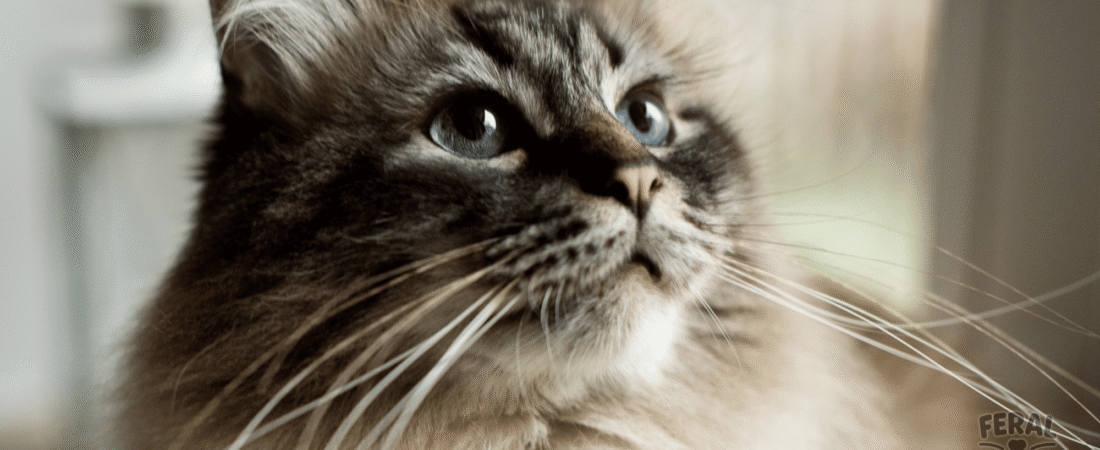📌 Whiskers Are Super Sensors

A cat’s whiskers (scientific term: vibrissae) aren’t just cute — they’re specialized sensory tools deeply wired into the nervous system. Each whisker follicle contains nerve endings that give cats an extra sense of spatial awareness.
- Placement: Not just on the muzzle — whiskers also appear above eyes, on the chin, and even on the backs of legs.
- Function: They detect air currents, measure openings, sense nearby objects, and provide feedback during hunting.
- Communication: Whisker position broadcasts how a cat feels — just like ears and tails.
👉 They’re as close to “cat body language subtitles” as you’ll get.
🦠 What Whisker Positions Mean
1. Relaxed Whiskers (Neutral, Pointing Sideways) 😌
- Meaning: Calm, content.
- Context: When your cat lounges in their bed or sunbeam.
2. Forward-Pointing Whiskers 🎯
- Meaning: Focused, excited, or in hunting mode.
- Context: Hunting toys, watching prey outside, or during play pounces. Predatory drive engaged.
3. Pulled-Back Whiskers (Flattened Against Cheeks) ⚡
- Meaning: Fearful, defensive, or stressed.
- Context: During vet visits, confrontations, loud noises. Often paired with flattened ears and dilated pupils.
4. Slightly Raised Whiskers While Purring 💕
- Meaning: Affection and relaxation.
- Context: While being stroked on the chin or sitting on your lap.
5. Twitching or Vibrating Whiskers ⚙️
- Meaning: High arousal or sensory overload.
- Context: Hunting, frustration (like window-bird-watching), or dreaming in sleep.
🚨 When Whiskers Signal Problems
- Whisker fatigue: Overstimulation from constant contact with bowls or objects can stress cats. Signs = avoiding food bowls, pawing at food, eating messily.
- Injury or loss: Broken whiskers can affect balance and confidence.
- Sudden changes in whisker position: Could mean stress, anxiety, or pain.
🌿 How to Support Whisker Health & Communication
- Use whisker-friendly bowls: Wide, shallow dishes prevent whisker fatigue.
- Don’t trim or cut whiskers: They are essential for spatial awareness — cutting them disorients cats.
- Observe whisker cues: Combine whisker position with ears, eyes, and tail to read the “whole emotional state.”
- Provide stimulation: Toys and climbing spaces let whiskers work naturally in exploring and hunting.
❓ FAQs
Q1: Can cats feel with their whiskers?
Indirectly, yes. The whisker follicles transmit touch and vibration info to the brain, letting cats “feel” without skin contact.
Q2: Why do my cat’s whiskers move while sleeping?
They may be dreaming of hunting — whiskers twitch as part of REM sleep.
Q3: What happens if a whisker breaks?
It will grow back, but during that time cats may seem clumsier or more cautious.
Q4: Do all cats have the same whisker length?
No — whisker length usually matches body width, helping cats gauge whether they can fit through spaces. Larger cats = longer whiskers.
💡 Final Thoughts
Whiskers are not just decorations — they’re multifunctional tools for sensing, hunting, and expressing emotion.
✅ Key takeaway: By watching whiskers along with ears, eyes, and tail, you’ll decode your cat’s emotional state with surprising accuracy.

